Diocletian’s Palace – A Guided Tour of this Ancient Wonder
In the last post I explained why we decided to visit Croatia and how we got to Split. This is the first full day of our trip to Dalmatia and I am looking forward to it with tremendous anticipation because we are going to visit Diocletian’s Palace, a place I have longed to see since first reading about it over fifty years ago. But first I want to sample the breakfast at the Vestibul Palace which our receptionist at the Villa Dobric, the annex to the hotel, said was much more extensive than that offered there. It was included in our room so the price was right. The breakfast was terrific with a great selection of juices, cured meats, pastries, fruit, salads, cheeses and really good bacon. They also offered omelets or any other type of egg. The lattes and cafe Americanos made sure we were sufficiently caffeinated to face a long day of exploring.
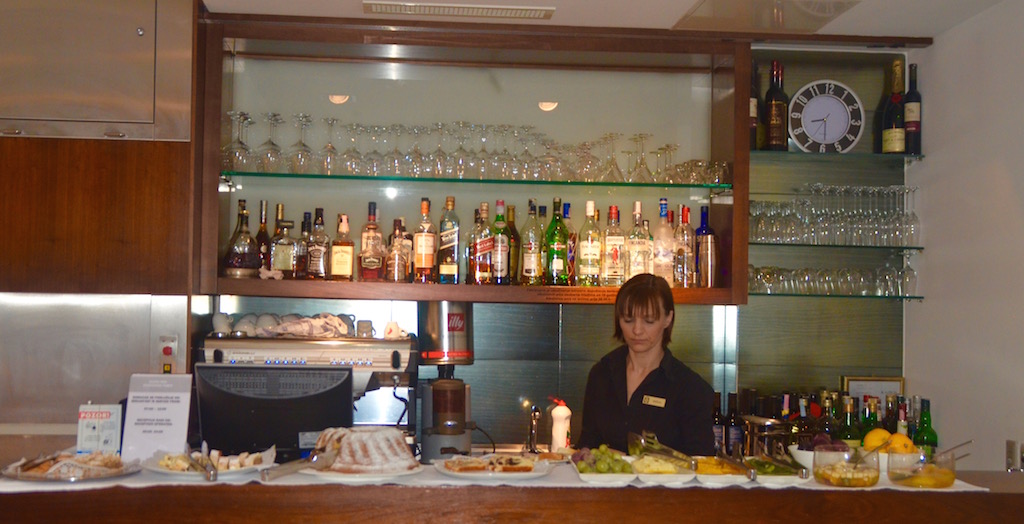
The Vestibul Singers
The Vestibul Palace is located near the entrance (aka the vestibul)nto Diocletian’s Palace and I couldn’t help but hear a booming sonorous voice coming from nearby and then noticed a number of middle-aged men dressed in black. I asked one of hotel employees who they were and she said they were a Dalmatian choir which sang in the vestibule. When I think of a vestibule I think of a small room at the entrance to a house. Not so in the case of Diocletian, about whom I’ll write in a minute. The vestibul to his palace is a huge octagonal building with a hole in the ceiling, sort of a mini version of the Pantheon in Rome. The acoustics here are marvellous and each day of the week a different local group sings and peddles cds to the tourists. This particular group had eight members and I asked our guide, who had now arrived, how they could possibly make a living doing this. His reply was. “Are you kidding, in the summer season they sell more cds than Michael Jackson!”. Alison did her job by dutifully buying a cd for 15 euros, although in truth the guys were pretty good.
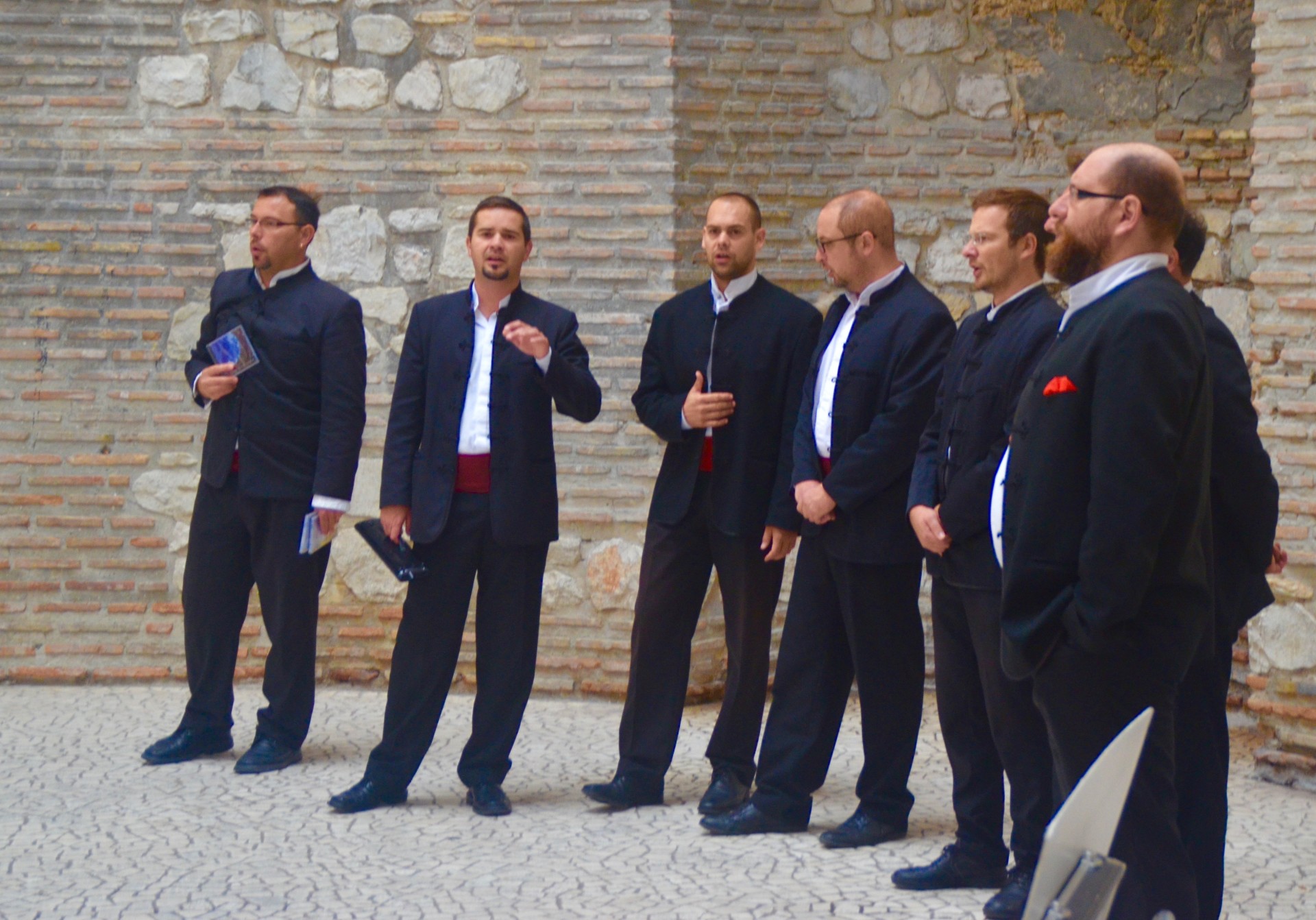
I mentioned our guide; when I booked the Vestibul Palace they emailed me to inquire if I was interested in booking either a guide or a driver or both. They offered a tour of Diocletian’s Palace as well as day tours to several national parks. This morning I had a guide booked to take us through the palace and other parts of old Split. He arrived punctually at 9:30 and introduced himself as Dino Ivancic. Dino is a 40 something guy who was a former history professor, restauranteur and for the past six years, a registered guide. His specialty is the emperor Diocletian about whom surprisingly little is known, considering he built one of the largest palaces anywhere in existence.
History of Diocletian’s Palace
My understanding of Diocletian was that he was the last of the great pagan emperors who actively persecuted the Christian sect which by the time he came to the throne in 284 were a substantive force in the empire. He was also successful in slowing the decline of the empire by dividing its governance into four regional areas rather than trying to control the whole thing from Rome. Lastly, I knew that he was famous for doing what no other emperor had ever done – retire. Dino was about to explain to us a lot more about Diocletian and his palace, but first he took us across the street from the entrance to the palace and stood by a simple broom shrub and explained that Split was actually a corruption of the Greek word aspledos. The Greeks were the first ones to colonize the area and they called it after the yellow flowering broom plant which was common in the area. In case you don’t know, this is what flowering broom looks like.

At the time it was built Diocletian’s Palace actually came right up to the waterfront, but the Venetians and others who followed have land-filled the area to the point that from ground level it is next to impossible to get an appreciation of just how big and impressive this palace was. Here is a shot I took later in the day from high on the Marjan peninsula that gives a better perspective. Essentially the line of palm trees you see in the picture mirrors the front of the palace and the spire of the cathedral sits atop what was Diocletian’s mausoleum.
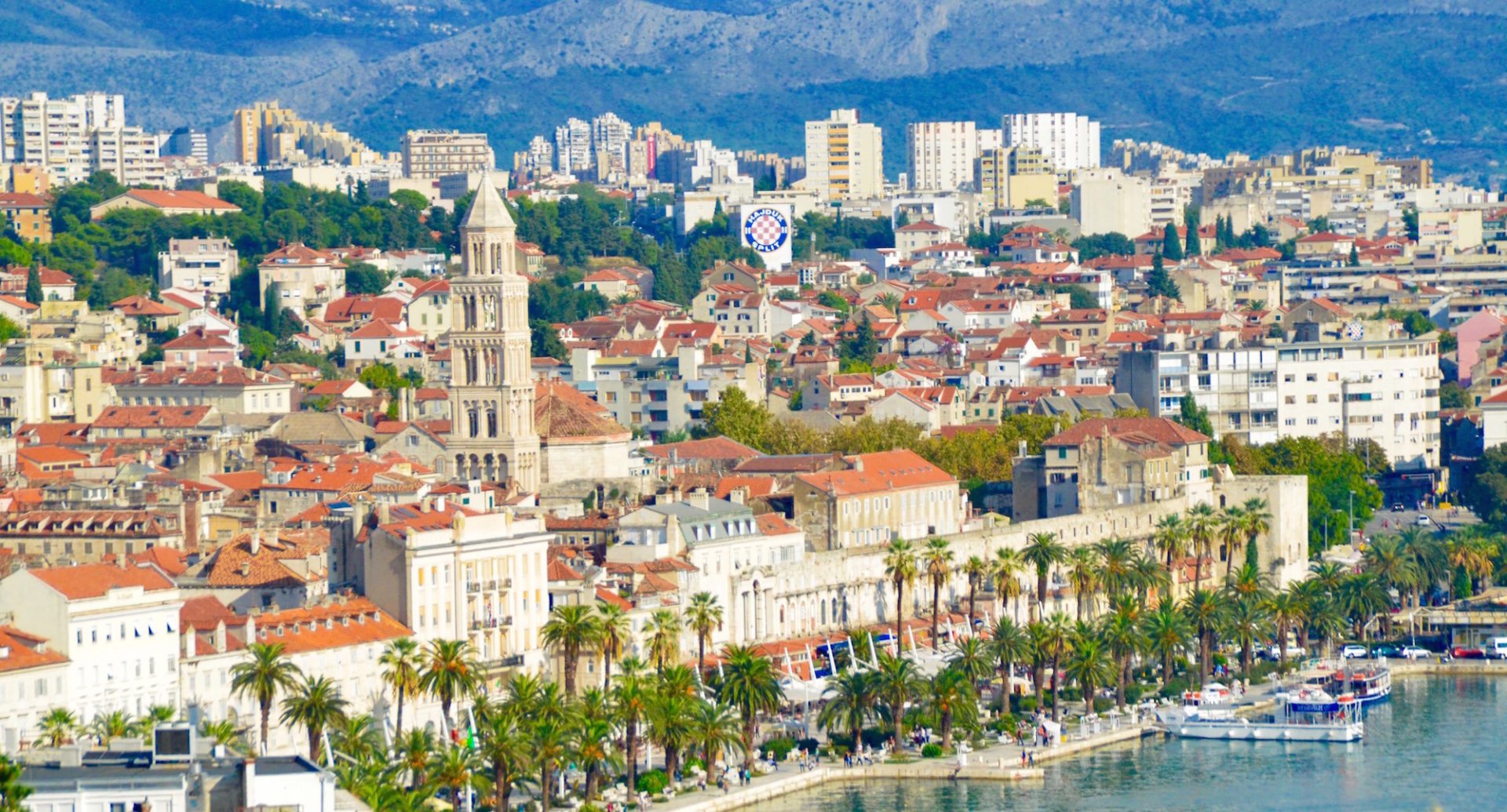
Although there is no fee for entering the old city and looking at the exterior walls and remaining towers of the palace, there is a fee to enter what, in effect, was the basement of the palace and the part that has miraculously survived almost intact for reasons that will follow. After paying the admission fee Dino takes us two a large map of the original palace and gives us his version of Diocletian and why he built this place.
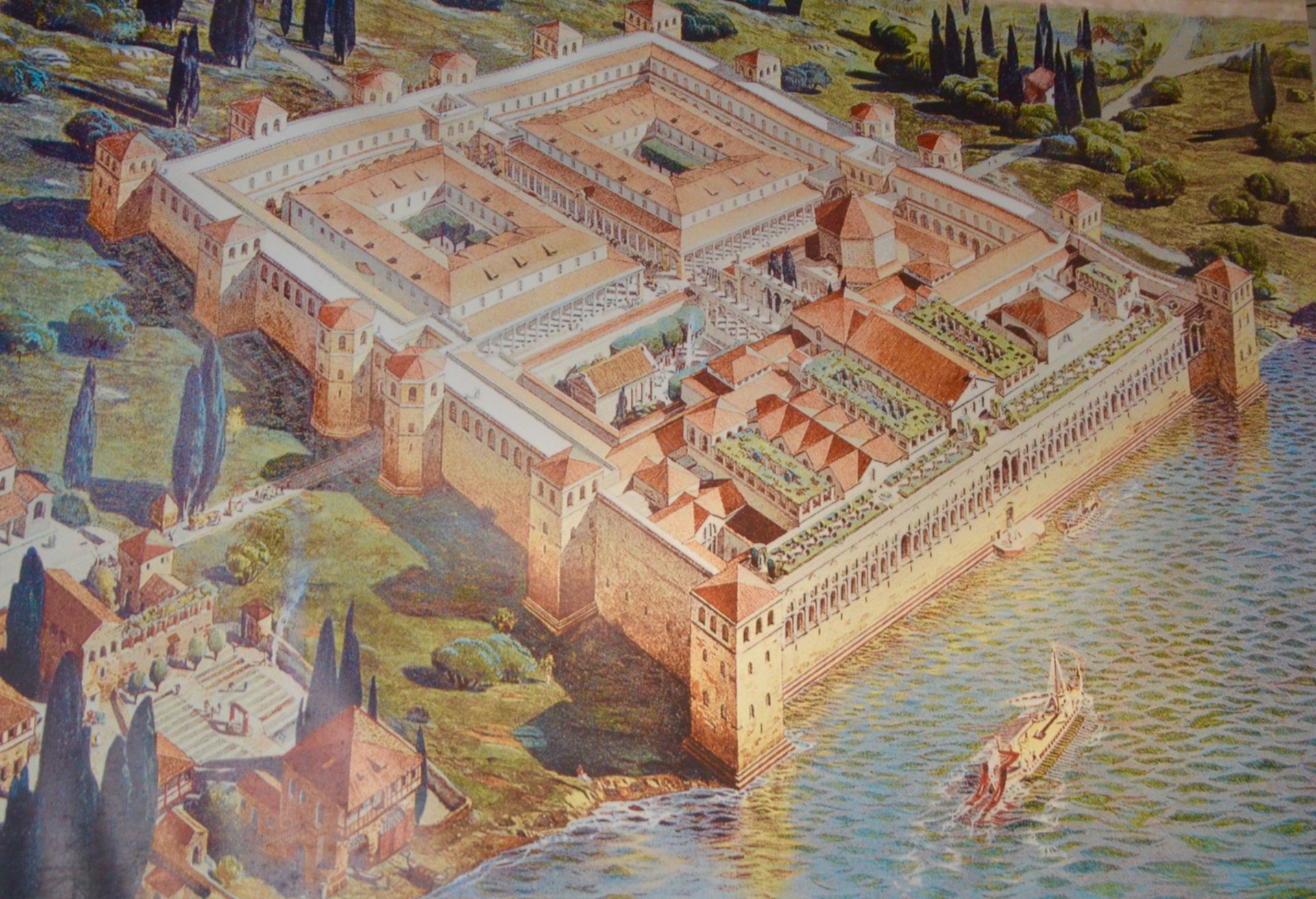
Essentially Diocletian clawed his way to the top from complete obscurity as the possible son of a freed slave in the nearby Roman city of Salona, to a top general potentially implicated in the murder of two Roman emperors to emperor himself. He was well aware that for almost two hundred years there was only one way for an emperor to end his rule and that was by assassination. Like the mafia, retirement was not an option. However, Diocletian broke the mould and did retire behind the walls of his palace, which in reality was a large prison, where he did avoid assassination. Not long after he died, Constantine became emperor and the Christians Diocletion so loathed, became the official religion of Rome. They then extracted their revenge on Diocletion by destroying all evidence of the pagan gods and turning his mausoleum into a basilica. Talk about getting the last laugh.
A Guided Tour of Diocletian’s Palace

Dino next took us to a map of the area. The blue line you see is the aqueduct Diocletian had built to provide his palace with water. Incredibly portions of the aqueduct are in use today providing modern Split with water from the same source first tapped by the Romans. Ok, time to visit Diocletian’s basement.
First question, why did these very large underground rooms survive and not most of the upper structures? The answer is the shits. Literally.
As the Roman empire crumbled and various barbarian tribes were attacking existing Roman cities, including the Croats attacking nearby Salona, the citizens retreated behind the walls of the virtually deserted palace and continued to live as best they could. They opened holes in the floors of the palace and used them as toilets and garbage pits. This went on for hundreds of years until the rooms were virtually filled and forgotten about until excavated by archaeologists not that long ago. The rooms, emptied of fossilized shit, provided a model for the rooms that had stood above in Diocletian’s time. They also had a great secondary purpose as the holding rooms for Daenerys’ dragons in Game of Thrones. No shit.
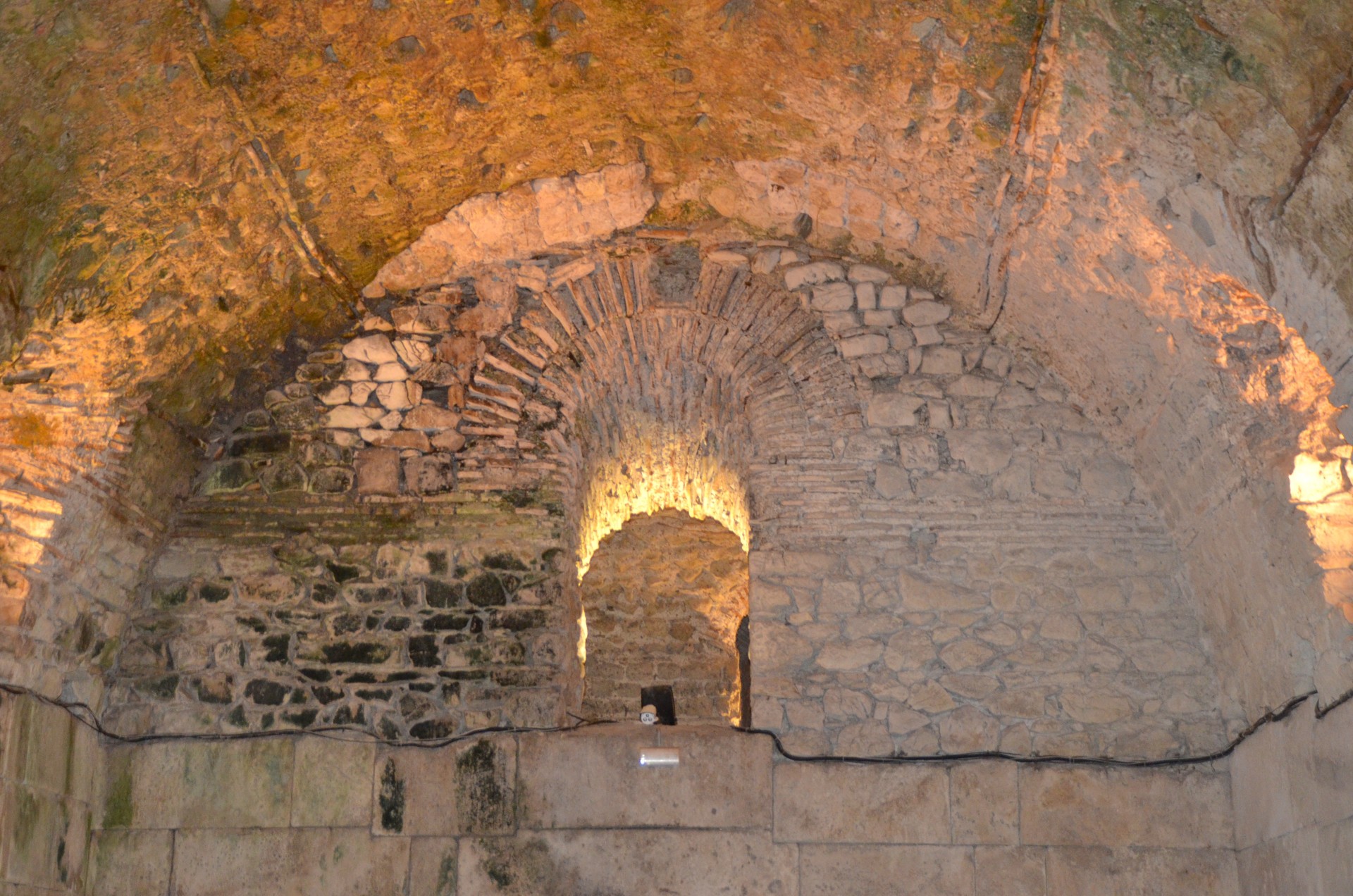
Dino took us to one huge room and asked us if it reminded us of anything and the answer was apparent – a Christian church with three naves and an apse. The only thing is this design was Roman and not Christian.

In another room was a bust of Diocletian. Where this came from is anybody’s guess, but it certainly isn’t Diocletian of whom the Christians made sure that no likenesses remained and where successful to the point that no one can agree what might be a real portrait or not.
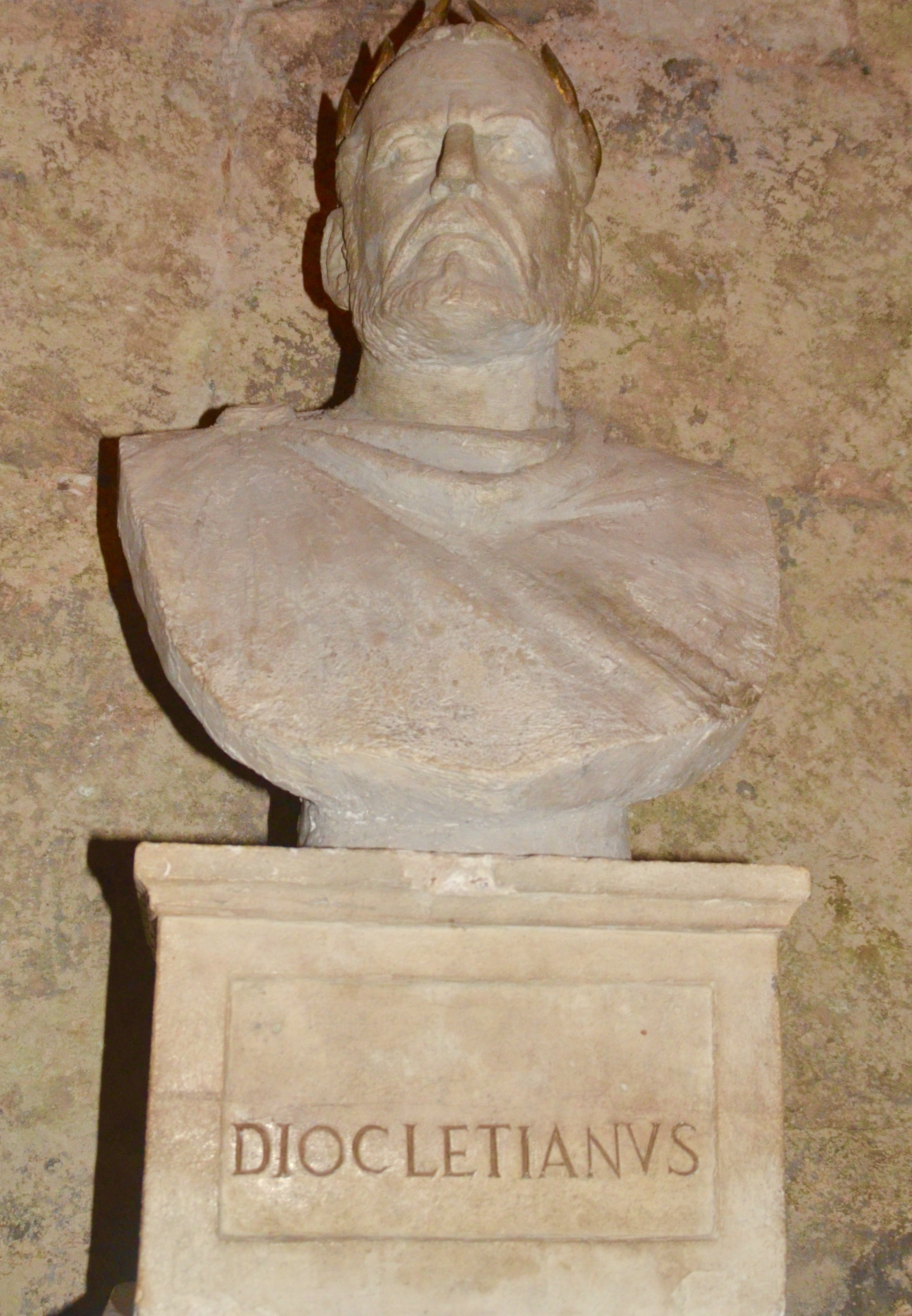
In truth the underground chambers are a bit oppressive although I can assure you the smell is long gone, but just how inspired can you get by mucking about in the bottom of an outhouse.
Back in the fresh air Dino pointed out these buildings that are composed of seven different distinct architectural styles over the past 2000 years. I’m not going to pretend I can remember which was which.
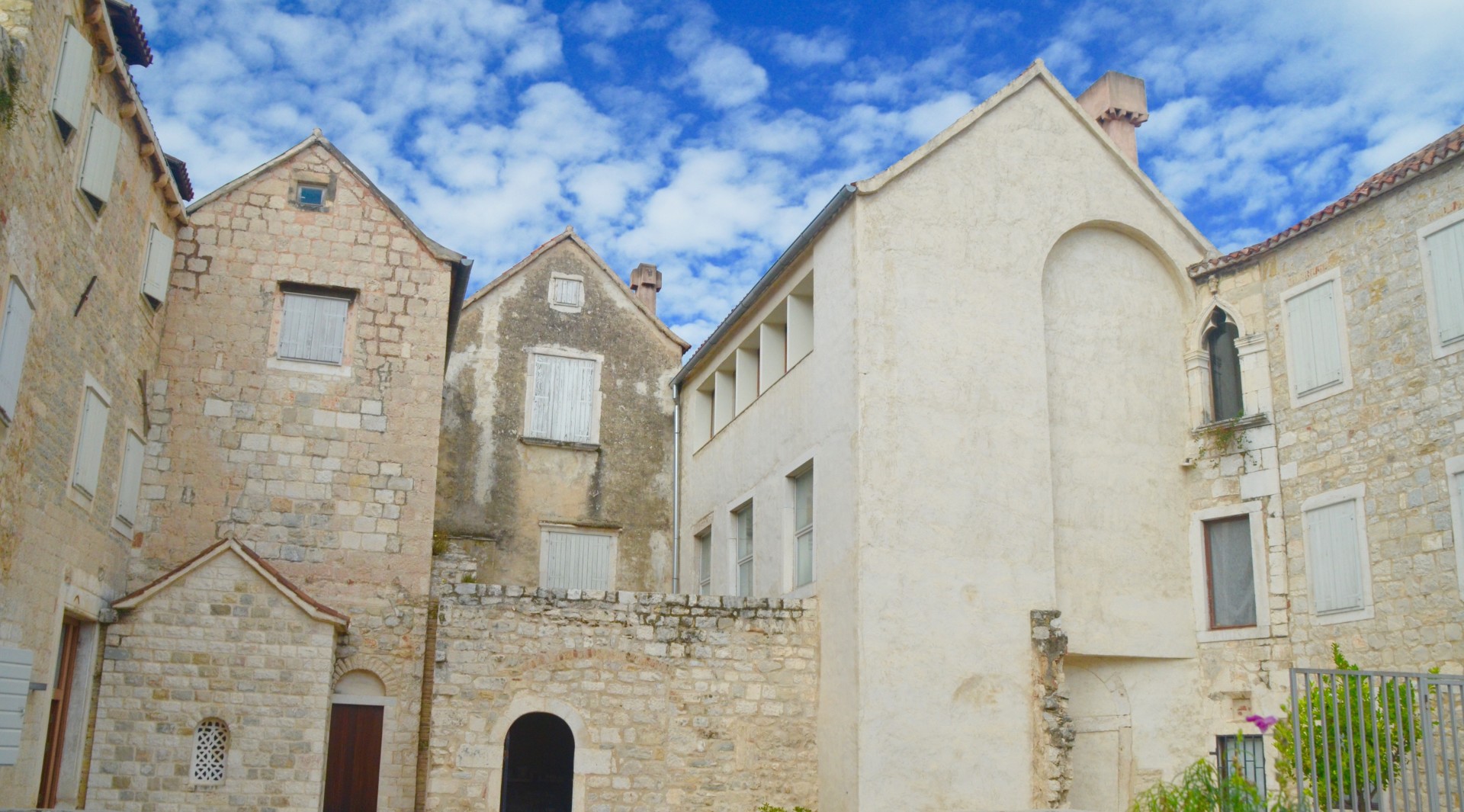
And these ruins of the original palace – caused by Allied bombing in WWII. Hard to believe they could survive that long only to be taken out by 20th century misguided bombs.
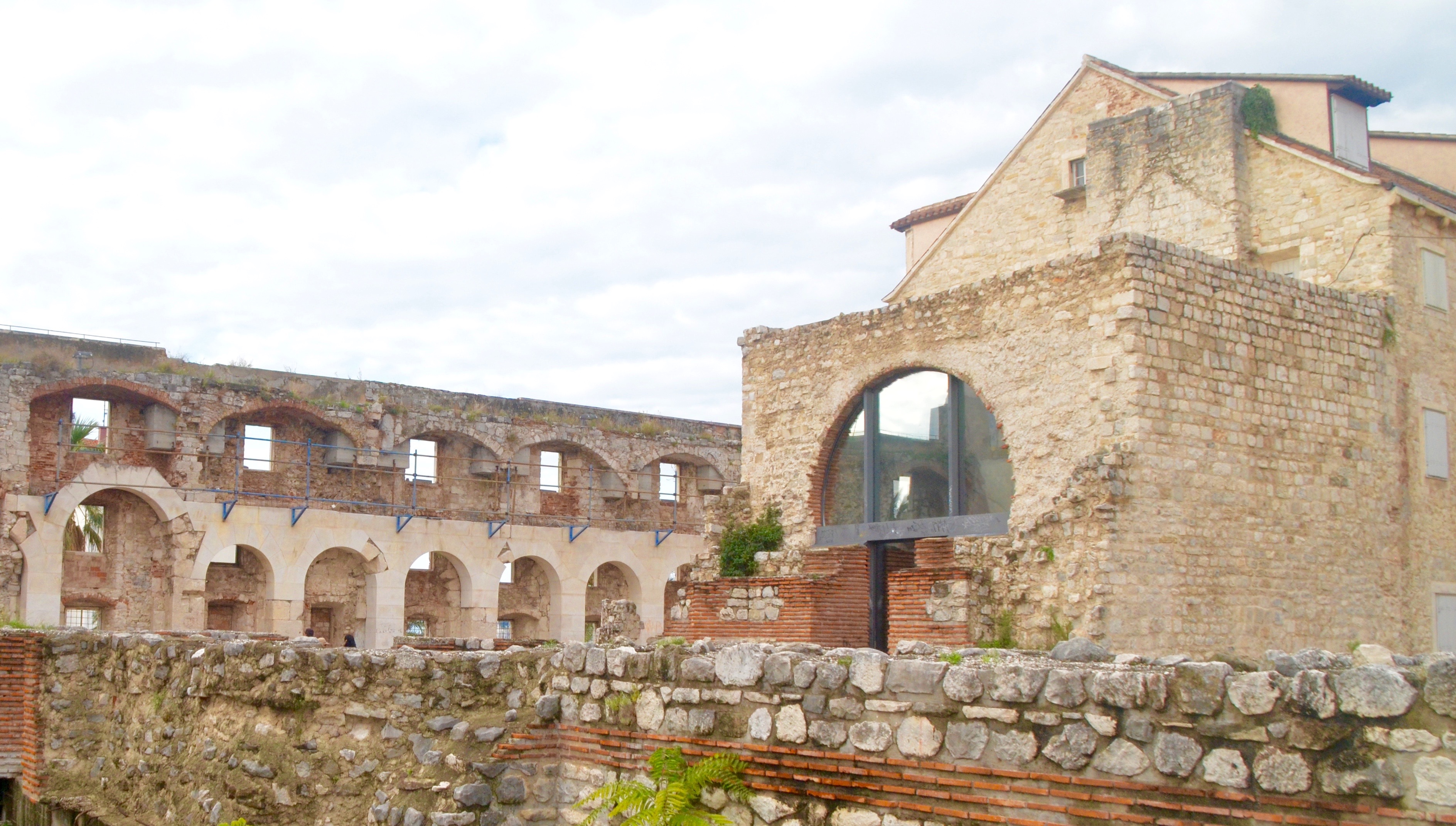
Lastly, do you recognize this claustrophobic place? It’s the setting for the attack on Daenerys by the Sons of the Harpy from season 5 of Game of Thrones.
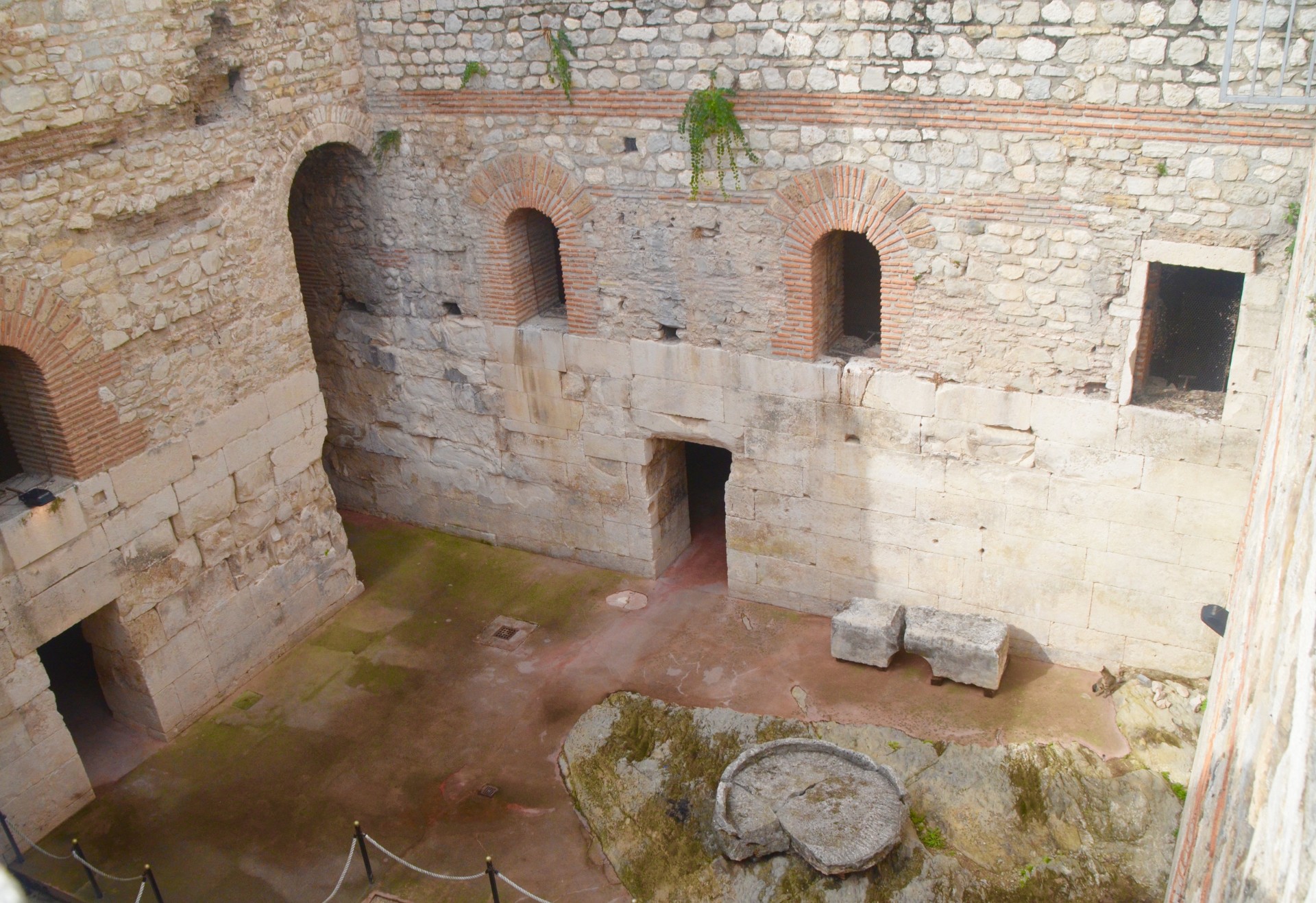
Speaking of massacres, the Christians did a pretty good job on all things they considered pagan including a number of Egyptian sphinxes that Diocletian had stolen from that country. Apparently he appreciated them for what they were, nice pieces of art that had no particular malevolence to them. Not so the Christians who weren’t taking any chance and decapitated them, like this one outside the small Temple of Jupiter Diocletian had erected when he decided he was a god.
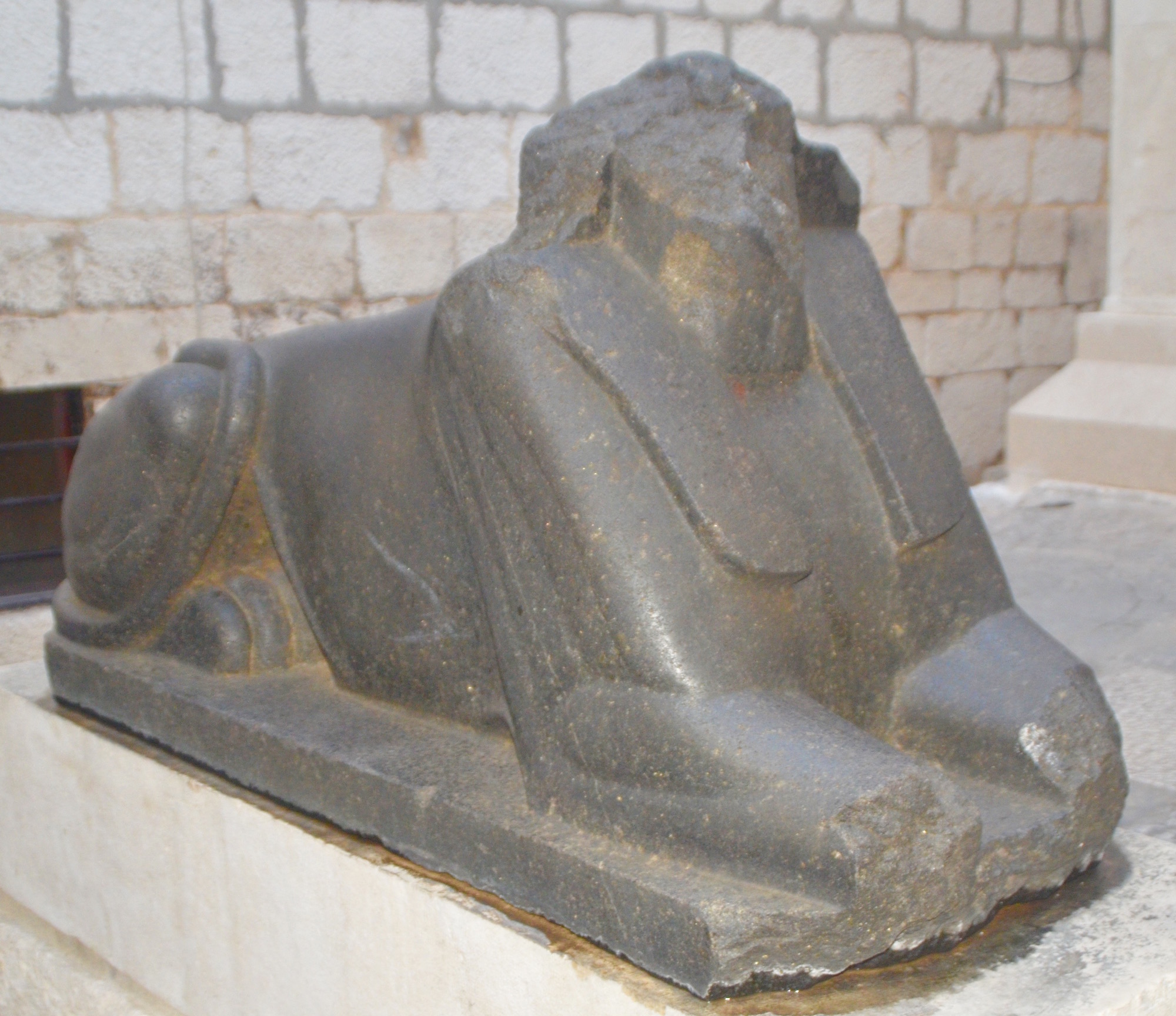
Dino pointed out this decapitated sphinx incorporated into a wall with a cross cut into it. Weird or what?
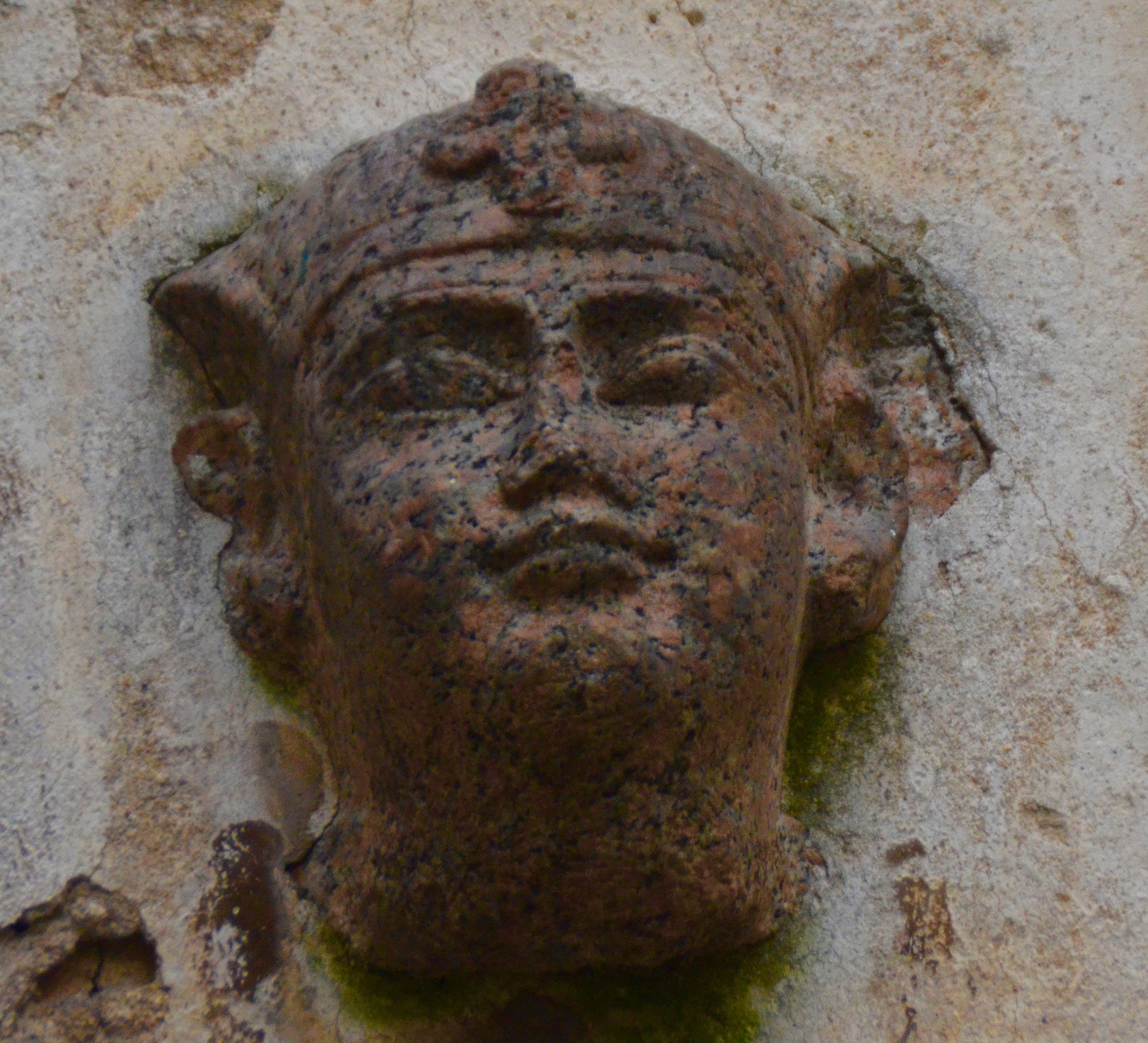
I bring these mutilations up only to demonstrate that destruction of great works of art and architecture did not start with the Taliban or ISIS. What those groups have done is a crime against humanity, but judged by the same standards, so was what the Christians did. All in the name of religion.
This has been a difficult post to write because there is so much about Diocletian’s Palace that speaks to the plight of humanity for the past 2000 years. This place alone is reason enough to visit Dalmatia. The great news is that there is a hell of a lot more to see and do and I hope you’ll join for the rest of the trip starting with a walk around the Marjan Peninsula.
Here is a link to the Croatia photo gallery with pics from Split to Dubrovnik and all places in between.

